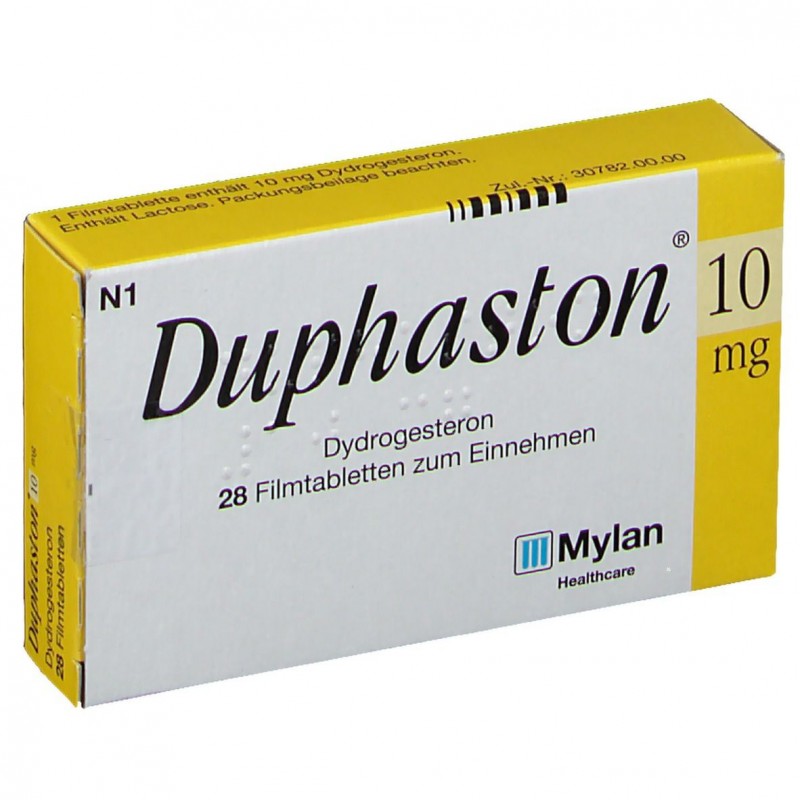This medicine is a selective estrogen receptor modulator (serm) used to treat and prevent osteoporosis in women after menopause. It may also be used to treat other conditions as determined by your doctor.
Duphaston
Dydrogesterone is an orally active progestogen which acts directly on the uterus, producing a complete secretory endometrium in an estrogen-primed uterus.At therapeutic levels, dydrogesterone has no contraceptive effect as it does not inhibit or interfere with ovulation or the corpus luteum.
Common uses
Dydrogesterone is an orally active progestogen which acts directly on the uterus, producing a complete secretory endometrium in an estrogen-primed uterus.At therapeutic levels, dydrogesterone has no contraceptive effect as it does not inhibit or interfere with ovulation or the corpus luteum. Furthermore, Duphaston is non-androgenic, non-estrogenic, non-corticoid, non-anabolic and is not excreted as pregnanediol.
Before using
Irregular duration of cycles and irregular occurrence and duration of periods caused by progesterone deficiency.
Combined with an estrogenic substance, Duphaston can be applied in secondary amenorrhoea, dysfunctional uterine bleeding and post-menopausal complaints where endogenous progesterone deficiency is implicated.
Directions
In general
The dosage schemes below are meant as general recommendations. For optimal therapeutic effect, the dosages are to be adapted to the nature and severity of the disorder.
In irregular cycles due to endogenous progesterone deficiency
Duphaston 5 to 10 mg is recommended especially in irregular cycles due to shortened luteal phase (ie pre-menopause). Treatment should be repeated for several cycles.
In secondary amenorrhoea
Administration of Duphaston in combination with an estrogen is usually recommended as in these conditions endogenous progesterone deficiency is nearly always accompanied by estrogen deficiency. 0,05 mg ethinylestradiol is administered each day from the 1st to the 25th day of the cycle, and 5 mg Duphaston is added twice daily from the 11th to the 25th day. Five days after the subsequent withdrawal bleeding, the same is repeated to imitate a natural cycle.
In dysfunctional uterine bleeding
The symptomatic treatment is aimed at stopping the bleeding and including a subsequent withdrawal bleeding.
To stop bleeding: Duphaston 10 mg together with 0,10 mg ethinylestradiol twice daily for 5 to 7 days.
To prevent heavy bleedings: Duphaston 5 mg twice daily from day 11 to day 25 of the cycle, if necessary, combined with an estrogen during the first half of the cycle.
In post-menopausal complaints
If for the symptomatic treatment of post-menopausal complaints estrogens are used (hormone replacement therapy - HRT), Duphaston 10 mg is used to counteract the effects of unopposed estrogens on the endometrium. A subsequent withdrawal bleeding is induced.
If on continuous estrogen therapy: Duphaston 10 mg twice daily during the first 12 to 14 days of each calendar month.
If on cyclic estrogen therapy: Duphaston 10 mg twice daily during the last 12 to 14 days of the treatment.
Cautions
Duphaston should not be given to patients with undiagnosed vaginal bleeding nor to those with a history of thromboembolic disorders.
Duphaston should be used with caution in patients with cardiovascular, renal or hepatic impairment, diabetes mellitus, asthma, epilepsy and migraine. It should be used with care in persons with a history of mental depression.
Store in a dry, dark place at temperatures not exceeding 25°C. Keep out of reach of children.
Possible side effects
Side effects of Duphaston may include gastro-intestinal disturbances, allergic skin rashes or urticaria, changes in libido, acne, fluid retention, mass gain, mental depression and breast changes, which may include discomfort or gynaecomastia. Alterations in liver function tests have been reported and less frequently jaundice.
In a small percentage of the treated cases, breakthrough bleeding may occur, which can be prevented by increasing the dosage. During the clinical application of Duphaston, no virilising side effects were observed.
If you take too much
See "Possible side effects" and "Cautions". Treatment is symptomatic and supportive.
Drug interactions
Drug interactions can result in unwanted side effects or prevent a medicine from doing its job. Some medicines or medical conditions may interact with this medicine. Inform your doctor or pharmacist of all prescription and over-the-counter medicine that you are taking.





